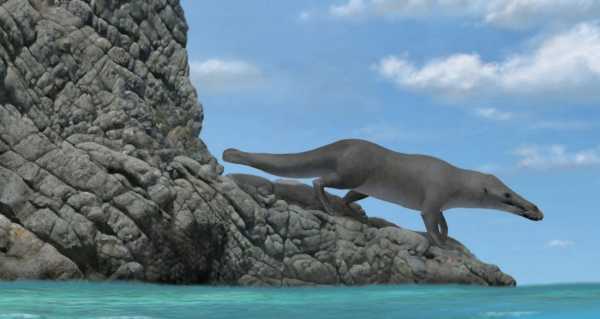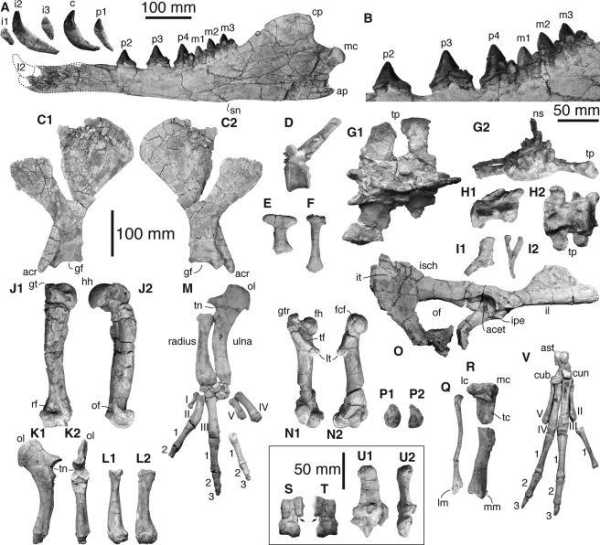This prehistoric quadruped discovered on the coast of Peru was similar to a modern-day otter or beaver — except it was 13 feet long.

G. Bianucci/Current BiologyThe ancient four-legged whale had a specific gait it used on land, as evidenced by its hip bones.
“We have known for a while that four-legged whales had made it to North America, but this is the first reliable record from South America and thus also the first from the Southern Hemisphere,” said Felix Marx, a paleontologist from the University of Liège in Belgium.
The species’ Latin name essentially denotes it was a “traveling whale that reached the Pacific.” Scientists were stunned to find shockingly well-preserved remains — including its jaw, front and hind legs, part of the spine, and tail — on Peru’s Playa Media Luna coast in 2011.
Researchers have since placed the species in the middle Eocene by dating the sediment in which the fossils were found.
“This is the first indisputable record of a quadrupedal whale skeleton for the whole Pacific Ocean, probably the oldest for the Americas, and the most complete outside India and Pakistan,” explained lead author Olivier Lambert, a paleontologist at the Royal Belgian Institute of Natural Sciences.
Similar to otters or beavers, the Peregocetus was highly capable of traversing both land and sea environments. Unlike those comparable animals, however, this particular whale was rather large — measuring in at around 13 feet long.

Alberto GennariThe four-legged whale crossed the Atlantic and reached South America about 42.6 million years ago.
Upon arrival, the Peregocetus likely made Pacific waters their hub — particularly along the Peruvian coast — before making their trek to North America. For Erich Fitzgerald, the senior curator of vertebrate paleontology at Museums Victoria in Melbourne, these revelations are colossal.
“This is a genuinely surprising discovery based on a relatively complete fossil skeleton that shows that really ancient whales capable of swimming and walking made it to the Americas much earlier than previously thought,” he said.
“It has really intriguing implications for our understanding of the evolution of whales. There may be this whole chapter of the whale evolution story that happened in South America and elsewhere on the coastlines of the Pacific and southern oceans that we didn’t know about.”
Sourse: www.allthatsinteresting.com





